In general, the term animal migrations conjures images of seasonal mass movements of a large community from one place to another and back again. And while this is accurate, migrations can also be used to describe a daily shift between resting and foraging zones.
So, animal migrations occur in various forms in many species. Sometimes it’s a quick trip to the chippy, other times it’s a permeant shift to better pastures. Sometimes all individuals do it, other times, some stay put.
Migrations are as important to the ecosystem as tides and seasons. They shuffle resources around, define community relationships and change the very geology of the biome. And, as we’ll see, they also create the foundation of the entire trophic web, all over the world.
We’ve picked out ten notable animal migrations of the countless millions that occur in the wild.
10. The Great Migration
Well known for contributing to the death of Mufasa, the Great Migration is one of the most iconic phenomena in African wildlife. It’s not even close to the longest migration, but it is one of the largest, in terms of the biomass that’s shifted.
1.2 million wildebeest, 300,000 zebras, along with countless gazelles and other antelope, take part in an epic journey across the Serengeti-Mara ecosystem to follow greener grasses.
Each square kilometre can be occupied by a thousand animals, and each of these will cover up to 1,000km of prehistoric migratory pathways as their ancestors have done for tens of thousands of years.
And, being very tasty animals, they’re met along the way by a horrifying gauntlet of predators from the big cats to crocodiles, and treacherous terrain that threatens to snuff out all but the most agile and fit.
The migration demonstrates immense selective pressure on those embarking upon it and is one of the most awe-inspiring natural scenes in modern times. 1
9. Arctic Tern
From one end of the vertebrate size spectrum to another, we come to a small, 100-gram bird responsible for perhaps the most impressive aerial migration known.
The arctic tern has recently been found to make the longest migration of any animal known, knocking off the previous record-holder, another small bird, the sooty shearwater, that routinely travels over 64,000km (40,000 miles) a year.
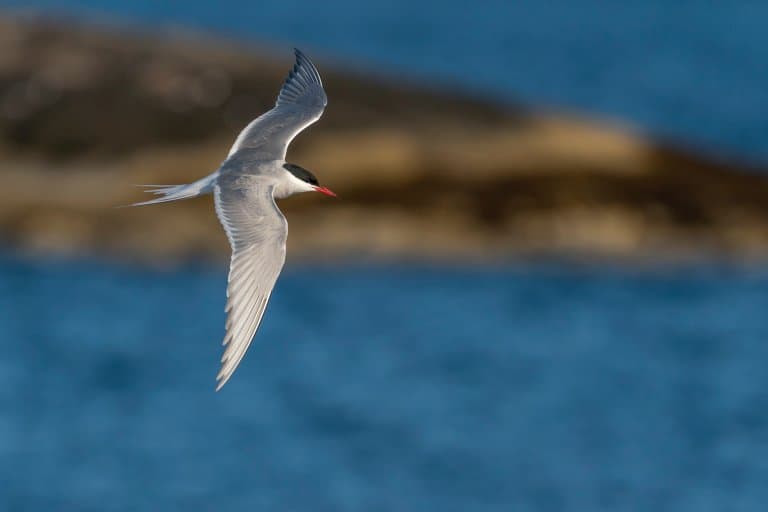
Such light animals are difficult to track since adding a monitoring device will necessarily increase their chances of failure.
Bird trackers accept an increased mortality rate among their subjects for the greater good, but devices have advanced significantly of late, and terns can now be fitted with a device as light as 1.4g, which is exactly how they’ve been accurately tracked along their 71,000 km (44,000-mile) journey between the North and South poles each year.
These are long-lived birds, and with such incredible migrations can potentially cover 2.4 million kilometres (1.5 million miles) in their lifetimes. That’s the equivalent of three trips to the moon and back! 2
8. Humpback Whale
There are somewhere around 36 billion tons of humpback in the oceans, which is roughly similar to the mass of wildebeest and zebra involved in the Great Migration over land.
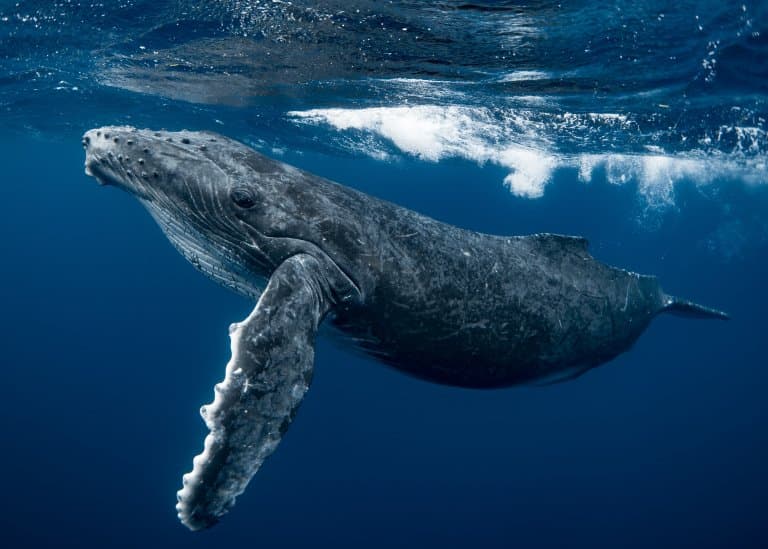
Not all of these whales take part in migrations, but those who do, take part in the longest migration among mammals that we know of.
Each leg of this epic journey is around 8,000 km (5,000 miles) long and transports vast amounts of blubber and muscle from the rich feeding grounds of the cold Northern Summer to the warmer breeding zones in the South. Then, they return!
This migration is accomplished at a slow pace, but there’s very little time to stop and eat along the way, so the whales will more or less fast along the route, relying on the fat they’ve managed to build up at either end. 3
7. Salmon
Salmon migrations not only cover great distances but also dramatic changes in the environment. Having spent much of their adult life in the ocean, they return to their freshwater birth site to spawn.
To navigate this complicated trip, they make use of various incredible senses that we’re only just starting to understand. The position of the sun, various smells, and the Earth’s magnetic field are all thought to provide directional cues to the fish, who will stop at nothing to return home to breed.
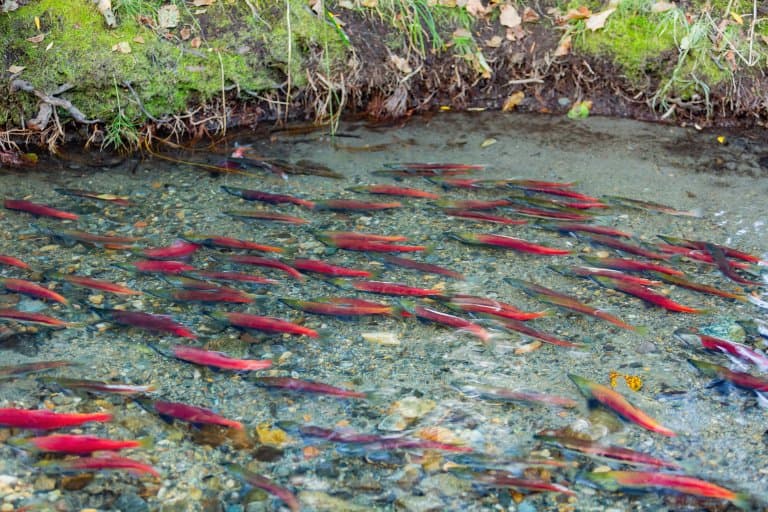
Before the rains, mature salmon will congregate at the estuary and wait for the change in season to increase the water level. This pause allows them to adjust to the lower salinity, and once the water has risen, they make their way inland.
This migration will take them across 400 km (250 miles) of varying salinity, often involving infamous battles upstream over rapids, where they’re faced with predation from bears.
But this is a one-way trip. Only 10% of salmon will be tough and lucky enough to make it, and after spawning, they’ll die. 4
6. Leatherback Sea Turtle
Another animal that’s well-known for returning home is the sea turtle.
Breeding areas are almost always close to their birth sites, and despite spending years out in the open ocean, these animals somehow find their way back to the exact location.
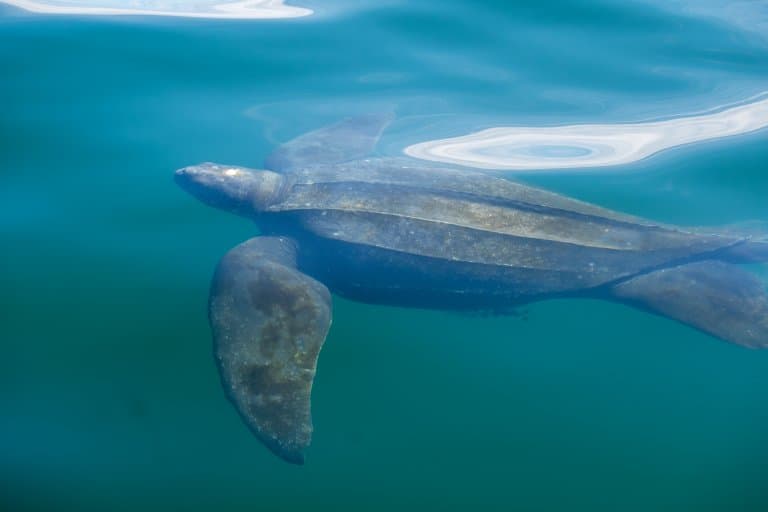
Again, this is a miracle of sensory perception we can’t relate to and likely involves the Earth’s magnetic field and water chemistry.
Leatherback turtles cover up to 16,000 km (10,000 miles) a year just looking for food, and one was tracked from Indonesia to Oregon, spanning a route of 20,000 km (12,400 miles) on its migration. 5
5. Monarch Butterfly
Back into the air, we have an invertebrate that can hold its own against many of the most impressive mammalian migrations.
The Eastern monarch butterfly takes on an incredible 4,000 km (2,500 miles) migration from its breeding sites in North America to enormous hibernation grounds in Mexico.
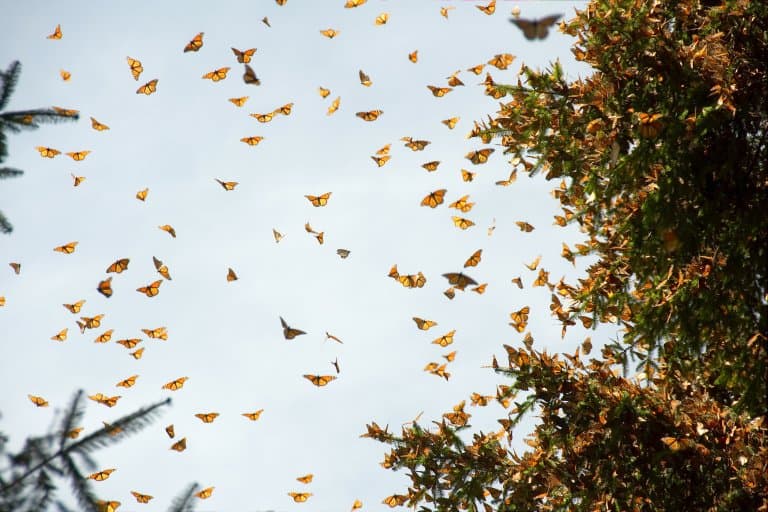
When the weather improves, they’ll start making their trip back up North, though none of the individuals that set off from Mexico will make it back.
Instead, they’ll lay eggs along the way, which will grow into an entirely new batch of butterflies, imprinted with the understanding that they now must take over the multi-generational trip back to the Northernmost parts of their range.
This is an incredible feat of genetics and biological timekeeping and makes this migration one of the most impressive of all animals. 6
4. Reindeer
Reindeer, or ‘caribou’ migrations are perhaps the longest of all land mammals, covering a remarkable distance of up to 4,300 km (2,700 miles) in a year.
This is another seasonal migration, driven by food availability, which brings them to regions of higher productivity where they can give birth and wean their young. In the Spring, the long march to their natal grounds begins, with vast herds of caribou in attendance.
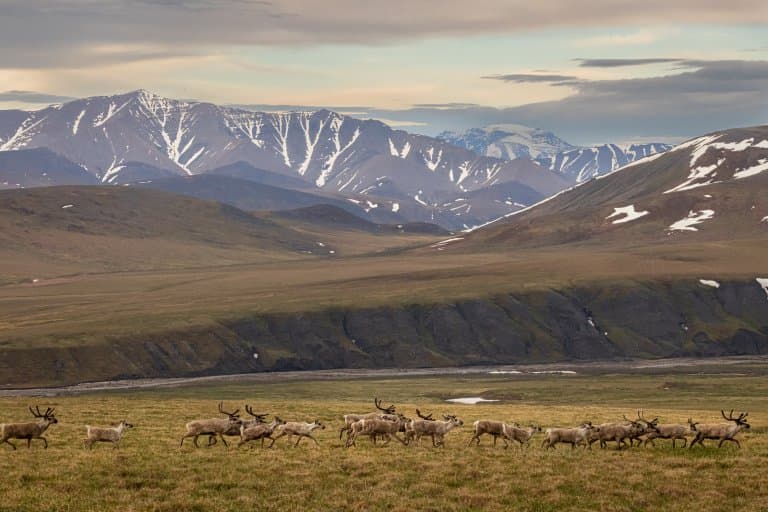
After their calves are strong enough, they split into smaller groups for the rut and then return to wintering grounds in the Autumn. This is a long and arduous migration during which many will die.
Drowning, broken legs and wolf predation are just a few of the perils of this trip, but it’s one that’s necessary for the safe breeding cycle of the species. 7
3. Great White Shark
Just as the caribou covers vast distances on land, one of the most iconic fish species matches this migration in the water.
Great whites are one of a handful of shark species that spend most of their time in the open ocean, and this amounts to some serious mileage throughout their lifetimes.

Their livers can account for a quarter of their body weight, and this allows for large amounts of fat storage, upon which the shark draws when on its epic journeys.
These sharks can travel up to 4,000 km (2,500 miles) from one end of their route to the other and have recently been discovered diving to mysterious depths of up to a kilometre in search of food. 8
2. Trekbokken
Before we get to the most significant animal migration of all, it’s important to mention one that has recently disappeared entirely.
Records from the mid-1800s tell of staggering herds of Springboks in South Africa, which led to them being picked as the national animal. These herds would embark on a migration that is described in sources as recently as the 1970s.
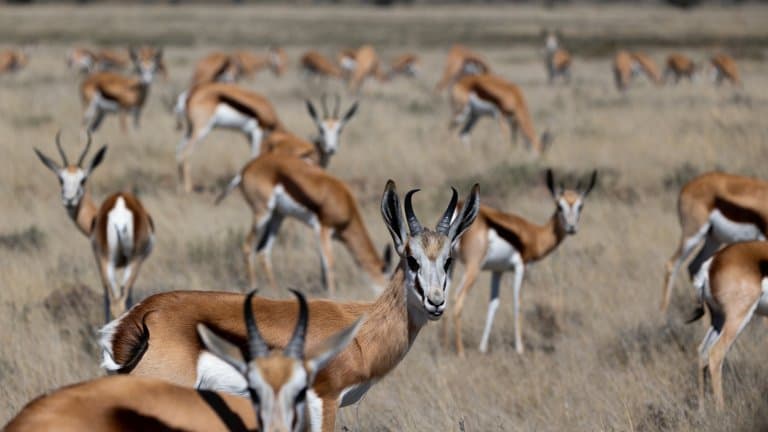
These vast treks would leave imprints on the land, and it would take the herd several days to pass by, and were described as, “like the flood of some great river”.
They would be accompanied by wildebeest, blesbok, quagga, and eland, and could potentially have rivalled the Great Migration further North.
Today, this “trekbokken” no longer exists. Many sources cite mysterious, unknown causes of its cessation, but photos from the late 1800s showing armed hunters with hundreds of Springbok bodies taken from the migration might hold some clue as to why. 9
1. Plankton
One of the most significant animal migrations is also one of the smallest in terms of individual animals, yet the largest in number. Every single day, literally billions of zooplankton traverse between the cold depths of the ocean and its warmer shallow, photic layers.
This is known as diel vertical migration, and for obvious reasons is a lot more common in the ocean than on land. Among plankton, this is an impossibly intricate process, involving not only animals but also phytoplankton, each species with its own unique clock and mechanism.

And it’s something we’re only just beginning to peel back the layers of, but it sets the foundation of the entire oceanic food cycle, fertilising the photosynthetic organisms on the surface and providing food for some of the largest animals on the planet.
This, in turn, affects the weather, and even the climate, sending a cascade of effects all over the globe and tying together the ecosystems of each of the communities listed here.
As such, the diel vertical migration of plankton is likely the greatest show on Earth that almost nobody has ever watched. 10
Final Thoughts
Migrations occur for several reasons and vary in length, motivation and scale.
Animals from the smallest to the largest take part in them, and the vast majority occur as a result of pressure to find food or safe breeding locations.
Regardless of why, they are hard-wired into the ecology of each biome and are therefore critically important to the stability of ecosystems at all scales.
Understanding the greatest migrations involves understanding the inter-connectedness of all life on Earth, and its reliance on processes that occur unseen, halfway across the world.
Fact Sources & References
- “The Great Wildebeest Migration“, Asilia Africa.
- Mason Inman (2010), “World’s Longest Migration Found–2X Longer Than Thought“, National Geographic.
- “Humpback Whale“, NOAA Fisheries.
- Charlotte Ireland Pope (2023), “The salmon run; an epic upstream journey“, Ribble Rivers Trust.
- Andrea Thompson (2008), “Turtle Migrates 12,774 Miles“, Live Science.
- Steven M.Reppert (2018), “Demystifying Monarch Butterfly Migration”, Current Biology.
- Ellen Rigell (2020), “Largest On Earth: Caribou Migration“, Earth.com.
- Shireen Gonzaga (2013), “Secret to the long migrations of great white sharks? Liver fat“, EarthSky.
- PLUSafaris (2012), “The Disappearance of The Springbok ‘Mega’ Herds“, People Like Us Safaris.
- Katherine Harmon Courage (2022), “Greatest Migration on Earth Happens under Darkness Every Day“, Scientific American.
